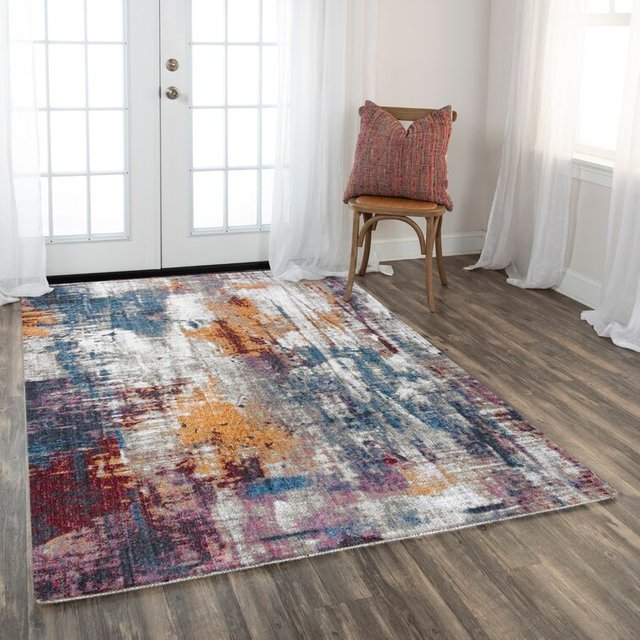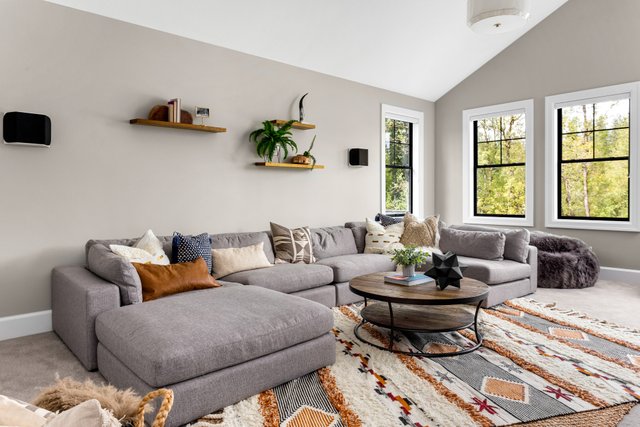The Ultimate Guide to Choosing the Perfect Area Rug for Your Home
Area rugs can be a beautiful and functional addition to any home. They not only add warmth and texture to a room but also provide comfort for your feet. Whether you have hardwood floors, tile, or carpet, an area rug can tie the whole room together and create a cozy and inviting space.
One of the great things about area rugs is that they come in a variety of sizes, shapes, and designs, making it easy to find the perfect rug for your home. From traditional to modern, there is a rug out there to suit every style and taste. In this ultimate guide, we will explore the different types of area rugs, factors to consider when choosing one, and how to incorporate them into different rooms of your home.

Benefits of Using Area Rugs in Your Home
There are numerous benefits to using area rugs in your home. One of the main advantages is that they can help define and separate spaces within a room. For example, if you have an open-concept living and dining area, placing an area rug under the dining table can visually separate the two spaces. This can be especially useful in small apartments or studios where there are no walls to separate different areas.
Additionally, area rugs provide insulation and sound absorption. They can help to reduce noise levels in a room by absorbing sound vibrations, making your space more peaceful and serene. Area rugs also provide an extra layer of insulation, especially on hard floors. They can help to keep your feet warm during the colder months and provide a soft and comfortable surface to walk on.
Another benefit of area rugs is that they can protect your flooring from wear and tear. High-traffic areas, such as entryways and hallways, can be prone to scratches and damage. Placing an area rug in these areas can help to protect your flooring and extend its lifespan. Additionally, area rugs are much easier to clean and maintain compared to wall-to-wall carpeting, making them a practical choice for busy households.

Different Types of Area Rugs
When it comes to choosing an area rug for your home, there are many different types to choose from. Each type has its own unique characteristics and advantages. Here are some of the most popular types of area rugs:
Wool Rugs: Wool rugs are a timeless and classic choice. They are known for their durability, softness, and natural resistance to stains and spills. Wool rugs are also excellent at retaining heat, making them a cozy option for colder climates.
Cotton Rugs: Cotton rugs are lightweight, versatile, and affordable. They are easy to clean and maintain, making them a practical choice for high-traffic areas. Cotton rugs come in a variety of colors and patterns, allowing you to easily find one that matches your decor.
Silk Rugs: Silk rugs are known for their luxurious and lustrous appearance. They are incredibly soft and smooth to the touch. Silk rugs can add a touch of elegance and sophistication to any room, but they do require more delicate care and maintenance compared to other types of rugs.
Natural Fiber Rugs: Natural fiber rugs, such as jute, sisal, and seagrass, are eco-friendly options that add a natural and organic element to your home. These rugs are durable and resistant to stains, but they may not be as soft or comfortable underfoot as other types of rugs.
Synthetic Rugs: Synthetic rugs, such as nylon or polyester, are a cost-effective alternative to natural fiber rugs. They are durable, stain-resistant, and easy to clean. Synthetic rugs come in a wide range of colors and patterns, making them a versatile choice for any room.

Factors to Consider When Choosing an Area Rug
Choosing the perfect area rug for your home can be an overwhelming task, but by considering a few key factors, you can narrow down your options and find the rug that best suits your needs and preferences. Here are some factors to consider when choosing an area rug:
Size: The size of the area rug is an important consideration. It should be proportionate to the size of the room and the furniture placed on it. A small rug can make a room feel cramped, while a large rug can overpower the space. Measure the area where you want to place the rug and consider the furniture layout to determine the appropriate size.
Style and Design: The style and design of the rug should complement the overall aesthetic of your home. Consider the colors, patterns, and textures that will best enhance your existing decor. If you have a bold and vibrant color scheme, a neutral rug can provide balance and harmony. On the other hand, if your room is more neutral, a rug with a vibrant pattern can add visual interest and serve as a focal point.
Maintenance: Consider the level of maintenance required for the rug. Some rugs may require professional cleaning or special care, while others can be easily cleaned with a vacuum or spot cleaning. If you have children or pets, choose a rug that is durable and stain-resistant.
Budget: Set a budget for your area rug and stick to it. Rugs can vary widely in price, depending on factors such as material, size, and craftsmanship. Determine how much you are willing to spend and prioritize the features that are most important to you.
By considering these factors, you can narrow down your options and find the perfect area rug for your home.

How to Determine the Right Size for Your Area Rug
Determining the right size for your area rug is crucial to achieving a balanced and harmonious look in your space. A rug that is too small can make a room feel disjointed and unbalanced, while a rug that is too large can overwhelm the space. Here are some guidelines to help you determine the right size for your area rug:
Living Room: In the living room, the area rug should be large enough to accommodate all the furniture in the seating area. Ideally, the front legs of the furniture should be on the rug, while the back legs can be off the rug. This creates a cohesive and visually appealing look. If you have a small living room, a rug that is slightly smaller than the seating area can still work, as long as it is centered and proportional to the space.
Dining Room: In the dining room, the area rug should be large enough to accommodate the dining table and chairs, even when the chairs are pulled out. A good rule of thumb is to choose a rug that extends at least 24 inches beyond the edges of the table. This allows enough space for the chairs to be comfortably pulled out without falling off the rug.
Bedroom: In the bedroom, the area rug can be placed under the bed, extending at least 18-24 inches on each side. This creates a soft and cozy landing spot for your feet when you get out of bed. Alternatively, you can choose two smaller rugs on either side of the bed, creating a symmetrical and balanced look.
By following these guidelines, you can ensure that your area rug is the right size for your space and enhances the overall design of the room.

Choosing the Right Material for Your Area Rug
The material of your area rug plays a crucial role in its durability, comfort, and maintenance. Each material has its own unique characteristics and advantages. Here are some popular materials used in area rugs:
Wool: Wool is a natural and sustainable material that is known for its durability and softness. Wool rugs are resistant to stains, moisture, and fading, making them a practical choice for high-traffic areas. Wool also has natural insulating properties, keeping your feet warm in colder months.
Cotton: Cotton rugs are lightweight, versatile, and affordable. They are easy to clean and maintain, making them a popular choice for families with children and pets. Cotton rugs are available in a wide range of colors and patterns, allowing you to easily find one that matches your decor.
Silk: Silk rugs are luxurious and have a smooth and lustrous texture. They add an elegant and sophisticated touch to any room. Silk rugs require more delicate care and maintenance compared to other materials, but they can be a worthwhile investment for those looking for a statement piece.
Natural Fibers: Natural fiber rugs, such as jute, sisal, and seagrass, are eco-friendly options that add a natural and organic element to your home. These rugs are durable and resistant to stains, but they may not be as soft or comfortable underfoot as other materials.
Synthetic Fibers: Synthetic rugs, such as nylon or polyester, are a cost-effective alternative to natural fiber rugs. They are durable, stain-resistant, and easy to clean. Synthetic rugs come in a wide range of colors and patterns, making them a versatile choice for any room.
When choosing the material for your area rug, consider factors such as durability, comfort, maintenance, and your budget. By selecting the right material, you can ensure that your area rug will not only look great but also stand the test of time.